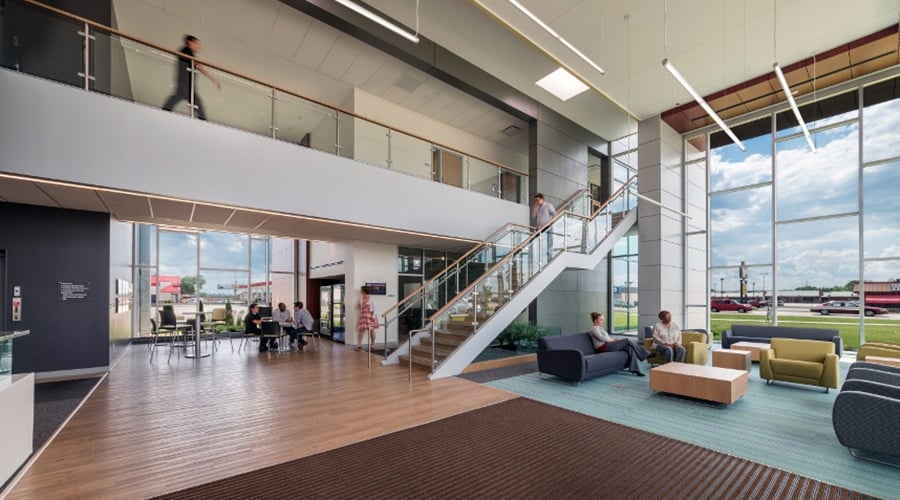- What's New
- Pricing & Purchasing
- Lead Times
- Literature & Samples
- Services & Warranties
- Careers
- Find a Rep
What is Active Design?

You could say active design is a workplace trend. But it’s also a philosophy, and furthermore, a movement.
Active design is something KI is very passionate about. But what is it? How does it diffuse through the everyday? It can range from the subliminal to the obvious:
- Using a staircase instead of an elevator.
- Utilizing windows over solid structures like walls
- Standing at your desk instead of sitting
- Choosing a fresh, healthy snack over junk food
- Meeting in outdoor spaces
According to the Center for Active Design, “Active Design is an approach to the development of buildings, streets, and neighborhoods that uses architecture and urban planning to make daily physical activity and healthy foods more accessible and inviting.”
The Rise of Human Sustainability
Worker wellness is top of mind for many executives. Chronic illnesses are rampant in our society. More than one third of U.S. adults are now obese, an epidemic that has resulted in estimated annual medical costs of more than $147 billion.
Companies have now arrived at the conclusion: it’s more effective to prevent than treat illness.
The easy solution? Implement a wellness program and all will be fixed! Not exactly. Even with wellness programs in place, employees do not necessarily use the programs, and a 30 minute jog will not reverse the damage done by sitting the majority of the workday. However, by incorporating movement and promoting healthy choices, a lot can change. Start simple; encourage face-to-face communication and invest in sit/stand worksurfaces. Both of which encourage movement. Simple design changes is what active design is all about. More and more research upholds the idea that design can promote and improve overall employee health.
Another perk of active design: employee attraction and retention. Healthy employees are more mentally engaged. Encouraging movement and choice in the workplace fosters not only healthier workers but also more engaged workers.
Innovation in Action
With the rise of the active design movement, novel ideas and actions are born. Companies, campuses, towns, healthcare facilities and parks are thinking of design in a fresh way. Staircases have now become the focal points, no longer hidden and unsightly, they are now grand and pleasing to the eye. Scooters and bikes are used in expansive offices and allow cross-functional teams to meet face-to-face rather than via email. Meetings and gatherings now can happen outside during walks around the campus.
Larger third spaces are popping up everywhere for collaborative work and for individual focus work. Businesses are adding on-site farmers markets, skywalks to connect buildings, rooftop community gardens and more. People are embracing creative ways to be active.
In a proprietary study, KI researched Active Design to better understand workplace initiatives, identify best practices and create actionable insights that help foster Active Design.
To learn more about our research and the 9 principles for Active Design, download our full white paper, "Understanding Active Design: The Rise of Human Sustainability".
Subscribe
Stay up to date with the latest trends and more.
